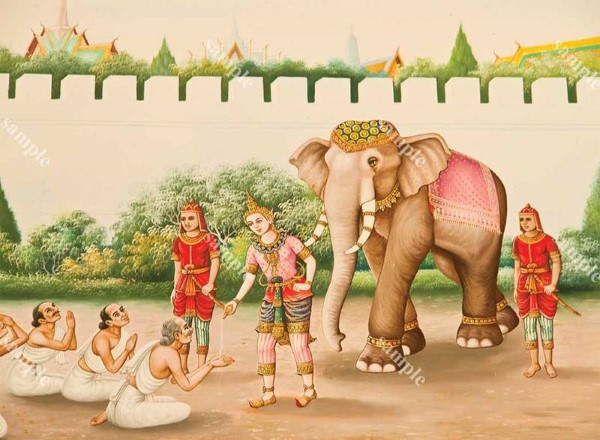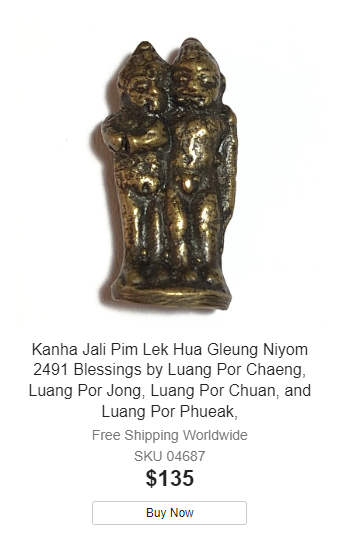Kanha Jali Loi Ongk Statuette: A Symbol of Generosity Forged in the Vessantara Jataka
The Kanha Jali Loi Ongk statuette, a creation of Luang Por Chaeng, was empowered with multiple Blessings by Luang Por Chaeng, Luang Por Jong, Luang Por Chuan, and Luang Por Phueak. This exhibit is a Pim Lek Hua Gleung Niyom 2491 BE edition amulet, and being the ‘Hua Gleung’ (pointed head) model, is an Ongk Kroo preferred model. The amulet is a significant embodiment of Metta Maha Niyom, or ‘great loving-kindness’, within Thai Buddhist iconography. This statuette serves a symbolic purpose beyond mere ornamentation, encapsulating the narrative of Prince Vessantara and his children, Kanha and Jali. This tale is meticulously carved into the statuette’s foundation, reflecting its deep-seated role in Thai Buddhist tradition.
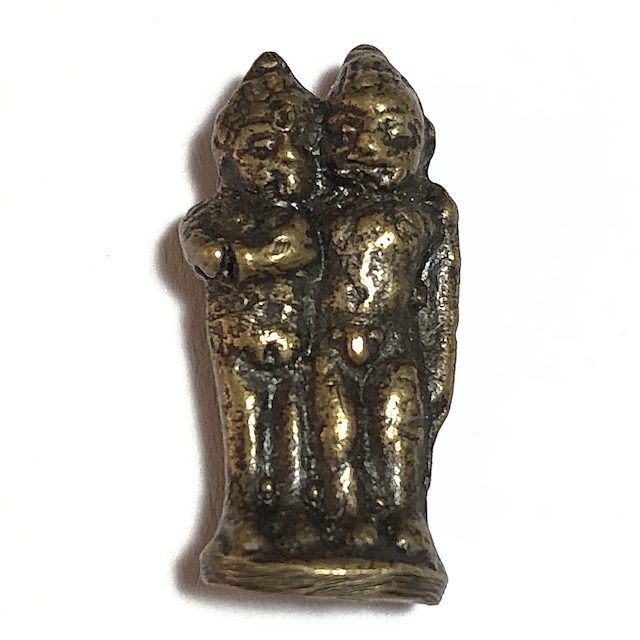
This particular statuette is often solely attributed to Luang Por Chaeng of Wat Bang Pang. However, it boasts a rich collaborative history. While Luang Por Chaeng undeniably played a pivotal role in its blessing, the initial commission belonged to Pra Luang Por Kloy, abbot of Wat Bang Kra Nok in Nonthaburi Province.
Released in the year 2491 BE (1948 CE), the first model of the Kanha Jali statuette emerged from a collaborative ceremony involving Pra Luang Por Kloy and other esteemed monks. This collective blessingempowered the amulet with immense power, making it a highly sought-after object among devotees.
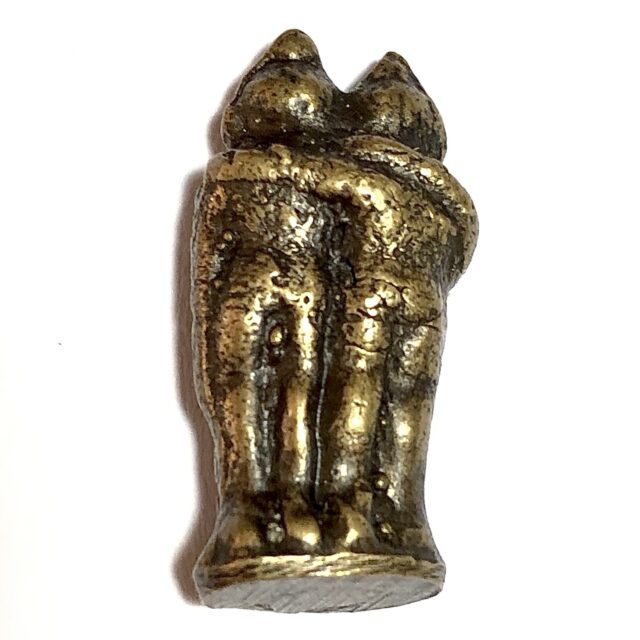
The tale enshrined within the Kanha Jali statuette draws upon the Vessantara Jataka, a revered saga within the Theravada Buddhist tradition, particularly prominent in Thailand. The saga revolves around Prince Vessantara, a previous life of the Buddha, renowned for his unwavering commitment to Dana (generosity). His acts of benevolence knew no bounds, extending to the gifting of even the most prized possessions.
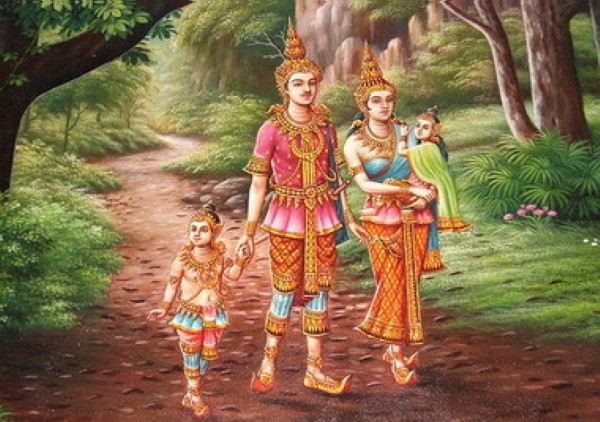
The turning point in Vessantara’s story arrives with the magical white elephant, Acala, entrusted to his care. This elephant, capable of summoning rain and ensuring the kingdom’s prosperity, becomes the object of a neighboring kingdom’s covetousness. Through manipulation, Vessantara is compelled to relinquish Acala, leading to a drought and immense suffering within his own kingdom. As public discontent escalates, Vessantara is banished with his wife, Princess Maddi, and their children, Kanha and Jali.
Exiled to the wilderness, Vessantara continues his practice of unconditional giving. This unwavering commitment is tested further when Jujaka, a cunning Brahmin, approaches him. Disguised as a holy man, Jujaka cites obscure scriptures, demanding Vessantara’s children as the ultimate act of generosity. Vessantara, despite the excruciating pain of separation, adheres to his principles and reluctantly agrees.
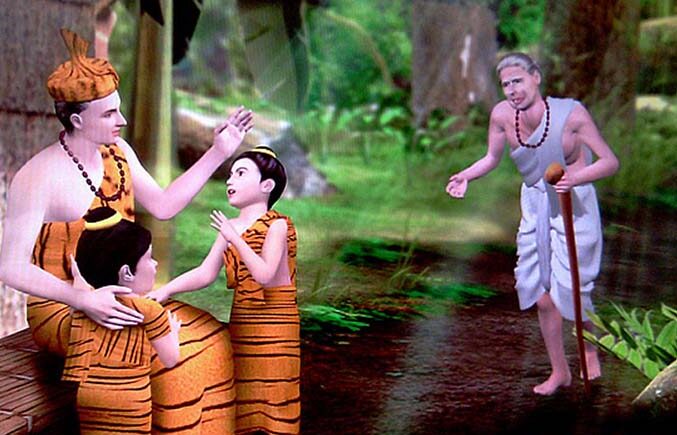
The story of Kanha and Jali’s abduction by Jujaka underscores the profound depths of Vessantara’s generosity. It is a testament to his unwavering commitment on the path to enlightenment, where selflessness transcends even the most cherished familial bonds. The Kanha Jali statuette serves as a constant reminder of this pivotal moment in the Vessantara Jataka. It embodies the virtues of Dana and the relentless pursuit of spiritual liberation. More than just an amulet, it is a symbol of compassion, selflessness, and the ultimate act of giving.
The blessings bestowed upon the Kanha Jali statuette, particularly during the collaborative ceremony involving Luang Por Chaeng, are believed to empower the wearer with Metta Maha Niyom (great loving-kindness) and prosperity. The accompanying Kata, a sacred chant used for communication and empowerment, further strengthens the connection between the wearer and the statuette’s inherent blessings. The practice of encasing the Kanha Jali statuette in gold signifies a devotee’s belief in its potent ability to attract success and accomplishments. It is more than just a treasured amulet; it is a tangible link to the timeless Vessantara Jataka saga, serving as a powerful reminder of the virtues it embodies.
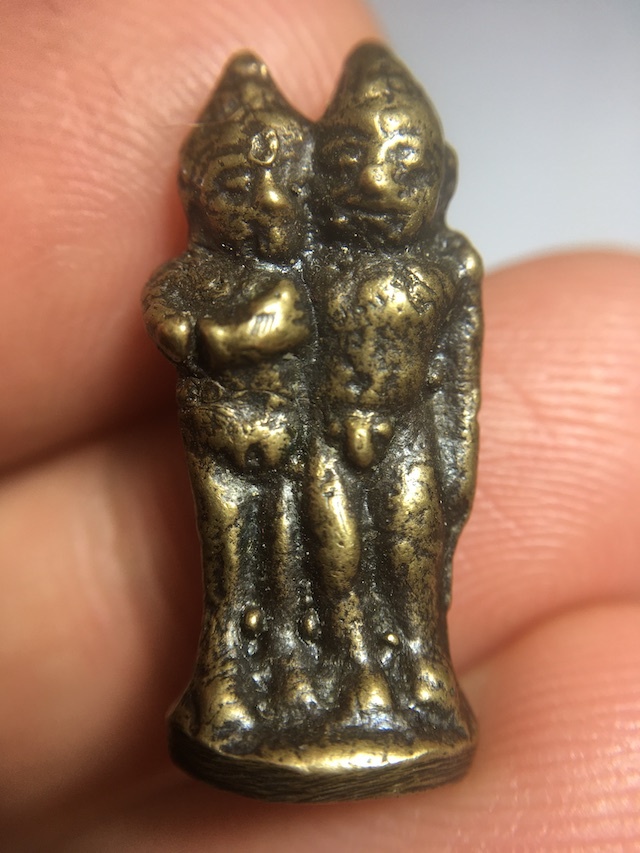
In essence, the Kanha Jati Loi Ongk statuette transcends the realm of a mere amulet. It is a captivating confluence of history, religious saga, and potent blessings. By possessing and cherishing this statuette, devotees not only embrace the virtues of the Vessantara Jataka but also connect with the legacy of Luang Por Chaeng and the collaborative spirit of Thai Buddhist practice.
Luang Por Chaeng, Silapanya, a significant figure in Thai history, was born on December 18, 2428 BE. He began his monastic journey at the age of 12 when he was ordained as a Samanera Novice Monk. His dedication led him to become a fully ordained Bhikkhu Monk at the age of 20. Luang Por Chaeng’s tenure as the second abbot of Wat Bang Pang in Nontaburi, Bangkok, followed his ordination. He succeeded Luang Por Pra Atigarn Jaroen, another respected figure in Thai religious history.
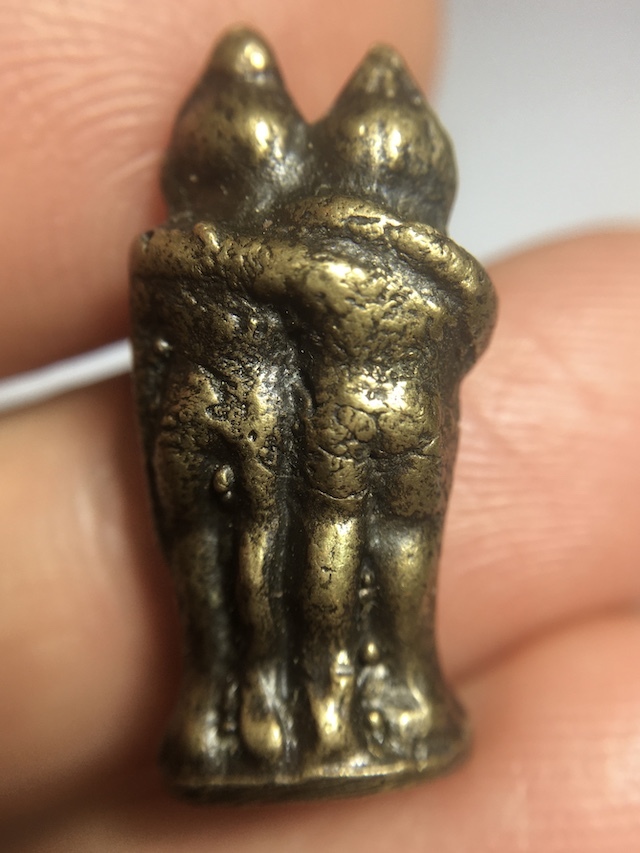
During the Second World War, Luang Por Chaeng’s reputation as a Pra Gaeji Ajarn Master Monk grew significantly. His profound understanding and expertise in Vipassana Kammathana practice attracted devotees from all corners of the nation. In addition to his spiritual teachings, Luang Por Chaeng was also renowned for his ability to empower amulets. This made him a highly sought-after participant in significant Buddha Abhiseka ceremonies, especially those for the Thai Military’s magical protective items.
In the era of the second world and Indo-China wars, Luang Por Chaeng, along with other revered monks such as Luang Por Jong of Wat Na Tang Nork, Luang Por Jad of Wat Bang Grabao, and Luang Por Opasi, stood out for their remarkable magical prowess. During the Indochina War, a significant event took place where protective items were empowered for the Thai Military. Among these items was the Pha Prajiad Sipsee Pan Tong, which was blessed by the respected monk, Luang Por Chaeng. The soldiers who wore these consecrated items became legendary, as they were said to be impervious to bullets. This led to the Thai Military being referred to as ‘Taharn Phi’ or ‘Ghost Soldiers’ by the French Military, a testament to the perceived protective powers of these items.
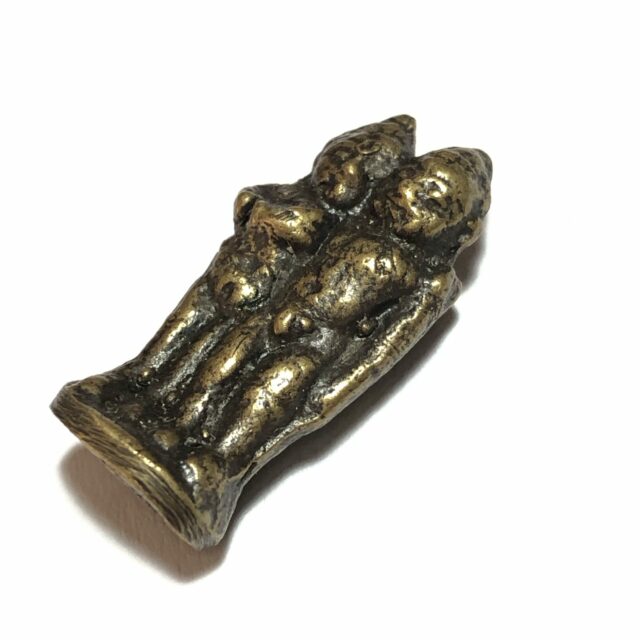
Luang Por Chaeng was a monk who inherited his Wicha, or spiritual practices, from esteemed Kroo Ba Ajarn. These included Luang Por Parn of Wat Bang Nom Kho, Ph Khai of Wat Cherng Lane, Luang Phu Chay of Wat Panan Cherng, Pra Kanajarn Say (Luang Por Say), Luang Phu Sukh of Wat Pak Klong Makham Tao, and Luang Por Jong of Wat Na Tang Nork. Each of these figures contributed to Luang Por Chaeng’s spiritual development and the Wicha he would later practice and pass on.
Devotees sought out Luang Por Chaeng for various reasons, including blessings, amulets, and healing. He was known for his welcoming nature, always ready to provide his assistance to those who sought it. For those who aspired to learn his Wicha, Luang Por Chaeng emphasized the importance of moral development and meditative skills. He believed that these foundational elements were crucial before revealing the secrets of incantations to his students. This approach ensured that his knowledge was passed on to those who were ready and committed to using it in a responsible and respectful manner.
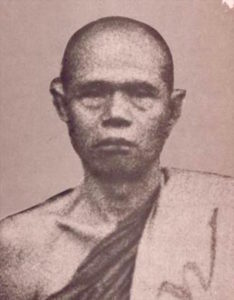 Luang Por Chaeng, a respected monk in Thai Buddhism, gained significant influence from his mentor, Luang Por Parn. This influence was particularly evident in Luang Por Chaeng’s amulets, especially the models featuring Buddha riding various animals. His amulets were diverse, ranging from Monk Coins and Pha Yant Tong Yantra Flags to Sai Sek blessed sandgrains, Pra Kring, Pra Chaiyawat Loi Ongk Statuettes, and Pra Sivali metallic Loi Ongk Statuettes. Each of these amulets was meticulously crafted, reflecting Luang Por Chaeng’s dedication and commitment to his spiritual practice.
Luang Por Chaeng, a respected monk in Thai Buddhism, gained significant influence from his mentor, Luang Por Parn. This influence was particularly evident in Luang Por Chaeng’s amulets, especially the models featuring Buddha riding various animals. His amulets were diverse, ranging from Monk Coins and Pha Yant Tong Yantra Flags to Sai Sek blessed sandgrains, Pra Kring, Pra Chaiyawat Loi Ongk Statuettes, and Pra Sivali metallic Loi Ongk Statuettes. Each of these amulets was meticulously crafted, reflecting Luang Por Chaeng’s dedication and commitment to his spiritual practice.
In 2484 BE, Luang Por Chaeng took a significant step to protect his devotees during wartime. He released a series of powerful amulets, which became a renowned historic edition. These amulets were not only potent but also accessible, as they were distributed for free during a large ceremony. This event was well-attended by numerous devotees, further emphasizing the significance of these amulets in Thai Buddhism.
Luang Por Chaeng’s legacy, extends far beyond his teachings, as he is also remembered for the rare and powerful amulets he created. These tangible pieces of his spiritual practice are cherished by those seeking protection, blessings, and a connection to Thai Buddhism’s rich history and traditions. Luang Por Chaeng passed away peacefully on July 26, 2500 BE, at the age of 72. However, his legacy continues to live on through his teachings and the amulets he created, which are still highly valued by devotees and collectors alike.
